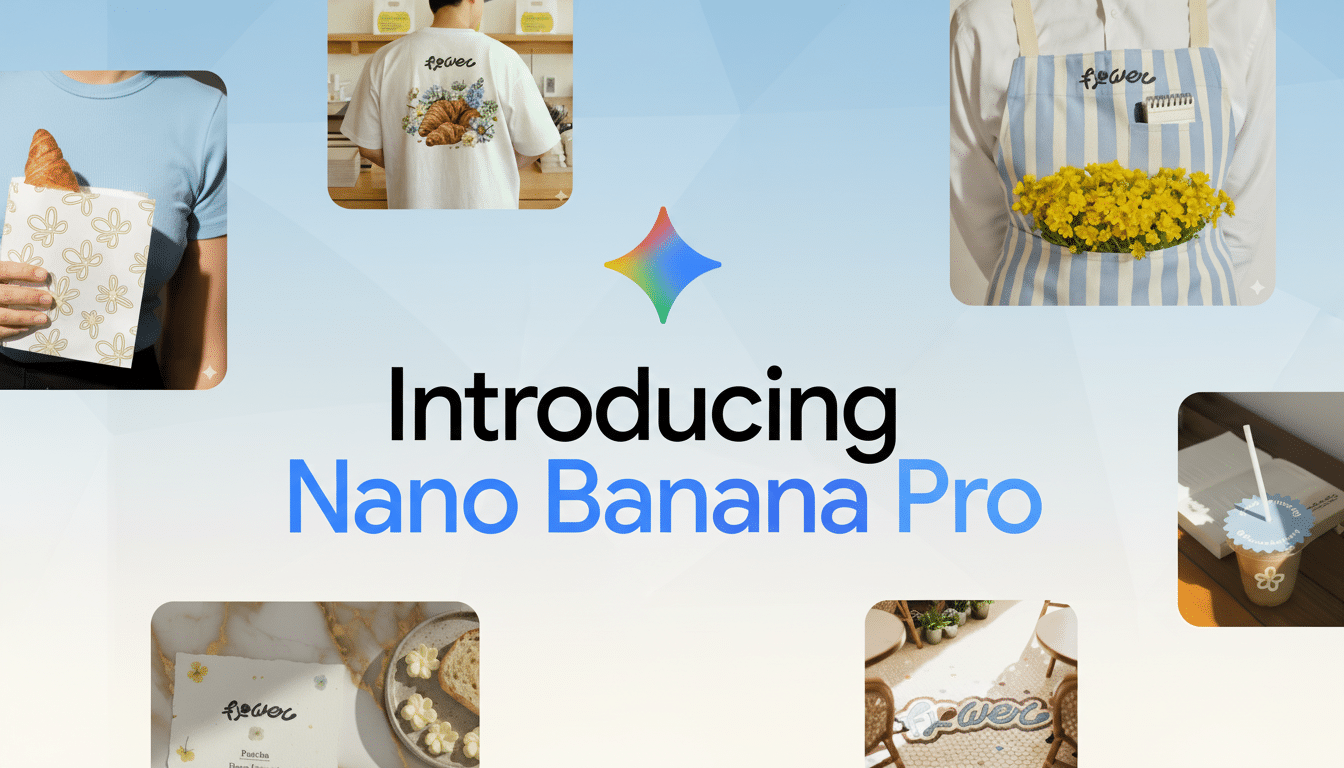Google launches Nano Banana Pro, a huge step forward for its image generation stack based on Gemini 3 Pro Image. Key to the upgrade are reasoning, precise typography across languages, richer editing, and the ability to pull real-time context from Google Search — features intended to take it beyond pretty pictures and into genuinely useful visual content.
Nano Banana Pro: What the New Model Changes and Adds
At the heart of Nano Banana Pro is the Fusion-Conv network, which leverages multimodal reasoning in Gemini 3 to organize images by feasible goals. That means it can devise explainers, infographics, and diagrams with consistent layouts, labels, and visual hierarchy — not just photorealistic scenes. Because it can pull in live information from Search, creators are able to add the latest weather, scores, or market numbers automatically to designs without having to update them themselves.
- Nano Banana Pro: What the New Model Changes and Adds
- Sharper Text and Multilingual Layouts for Designers
- Compositional Power and New Editing Tools Explained
- Where You Can Access and Try Nano Banana Pro Today
- Safety, Watermarking, and Content Provenance Updates
- How Nano Banana Pro Compares with Rival Image Generators

Why this shift matters is that image models have historically struggled to plan for tasks and provide factual grounding. By tethering generation to fresh information, Google is signaling that Nano Banana Pro should serve as a tool for dynamic content — dashboards, event posters, recipes, or educational material — rather than simply art that is occasionally static.
Sharper Text and Multilingual Layouts for Designers
Nano Banana Pro is Google’s best model so far for reproducing readable text found in images, such as complex scripts or even mixed-language designs, the company says. Even in many of the more advanced diffusion and transformer models, storefront signs, product labels, or small captions are still garbled; better rendering of text already is a tangible discriminator for marketing creatives as well as for product teams.
The model’s ability to reason in several languages is derived from Gemini 3’s cross-lingual understanding, which has performed well on reading and writing tasks like those emphasized by academic benchmarks such as TextCaps and DocVQA. If third-party evaluations verify Google’s claims, this could cut out the busywork of manually finessing such edits for posters, slides, infographics, and other multilingual projects.
Compositional Power and New Editing Tools Explained
Nano Banana Pro can now mix 14 input images together, and keep the likeness of up to five people in a single composition. That’s helpful for storyboards, brand mood boards, and family or team snaps where identity consistency is critical.
Modeling controls are finer-grained, from localized fine-tuning to camera angle, focus, and lighting adjustments — all of which will come in handy when you just want to do some adjusting but don’t need the whole scene recreated.

Output is more versatile as well, with creators able to target common aspect ratios and export in 2K or 4K, mirroring their deliverables to print specs, social crops, or video frames.
Where You Can Access and Try Nano Banana Pro Today
Nano Banana Pro is now accessible worldwide in the Gemini app, under “Create images” with “Thinking” as the model. Free-tier users get a small amount of credits before being returned to the regular Nano Banana. Those on Google AI Plus, Pro, and Ultra tiers get larger quotas.
Outside of the app, Nano Banana Pro is accessible in AI Mode featured in SFGAI Pro and SFGAI Ultra US models, as well as for NotebookLM subscribers worldwide. Users can select Nano Banana for simpler edits on a single item, or the more advanced Nano Banana Pro for intricate compositions using multiple items.
Safety, Watermarking, and Content Provenance Updates
Google is also using SynthID to detect more AI-generated content in the app, and has its eye on expanding that verification check for audio and video. Visible watermarking (regardless of whether the image is offered for free or in Google AI Pro) still applies, with Ultra subscribers having access to images without a visible watermark. The emphasis on provenance mirrors wider industry efforts, such as from the Coalition for Content Provenance and Authenticity and guidance released by organizations including Stanford HAI and NIST.
How Nano Banana Pro Compares with Rival Image Generators
On the competition side, the interesting swing here is text credibility and real-time context. Midjourney and OpenAI’s DALL·E 3 have shown advances in typography, but still generate artifacts, particularly for smaller font sizes or multi-script arrangements. Firefly from Adobe is quite versatile for brand-safe outputs and commercial-use licensing but tends to need a bit more manual layout work for complex data visuals. The idea behind Nano Banana Pro is to marry compositional control with factual grounding — something product teams might want if they need a more stable identity rendering, say, or multilingual packaging comps — or up-to-the-minute infographics.
The proof will be in upcoming independent testing, but should it prove accurate, the leap from artful generation to functional design could well be Nano Banana Pro’s defining accomplishment. For creators, marketers, and educators, it may mean fewer handoffs between A.I. drafts of images and the human layout tools — and a quicker path from idea to production-ready image.

